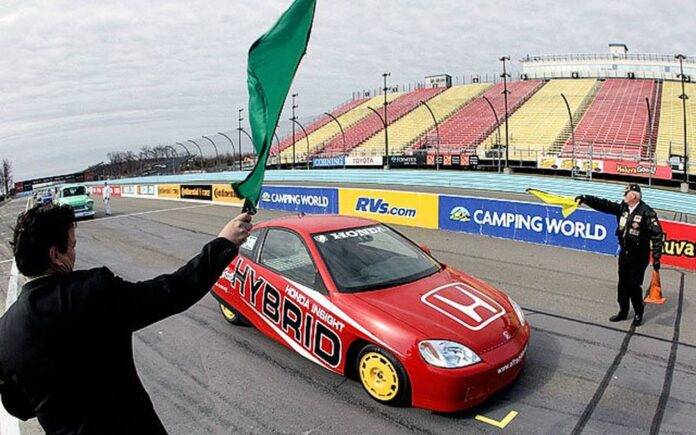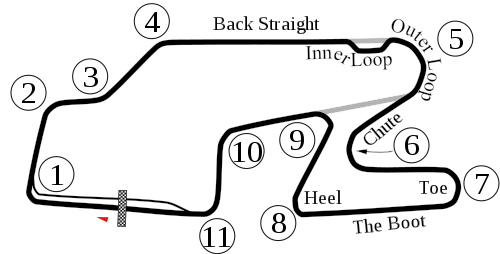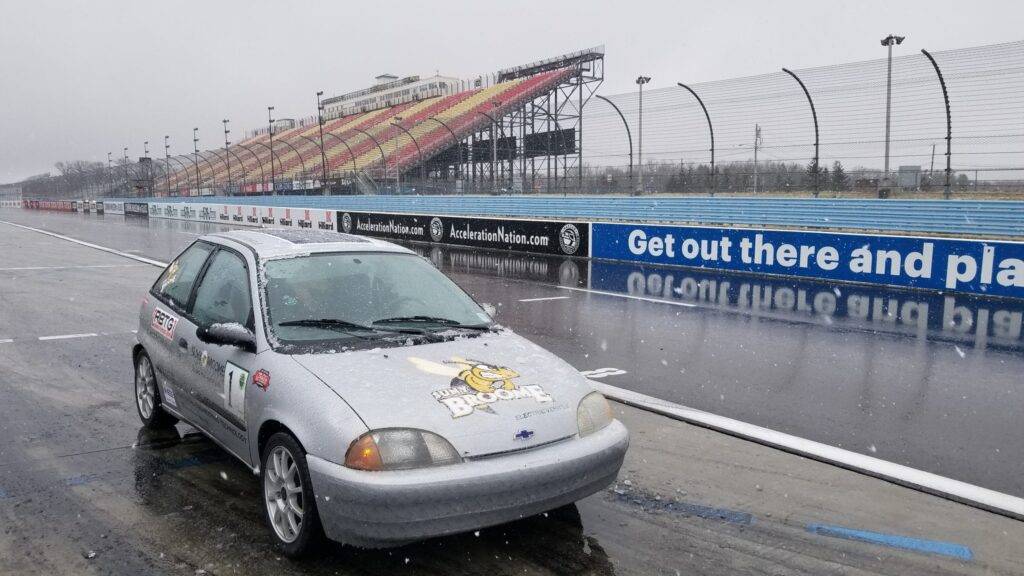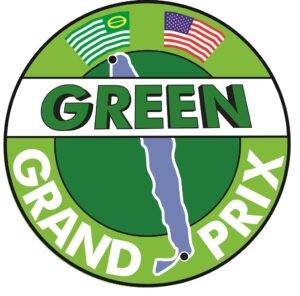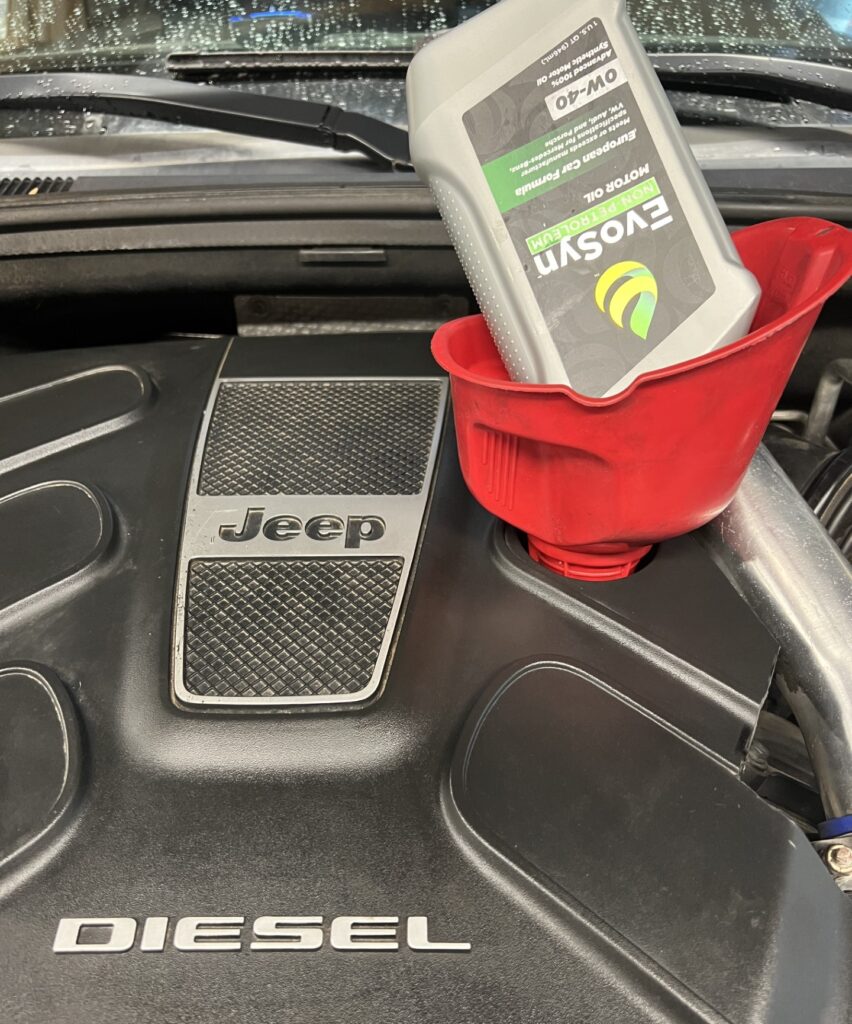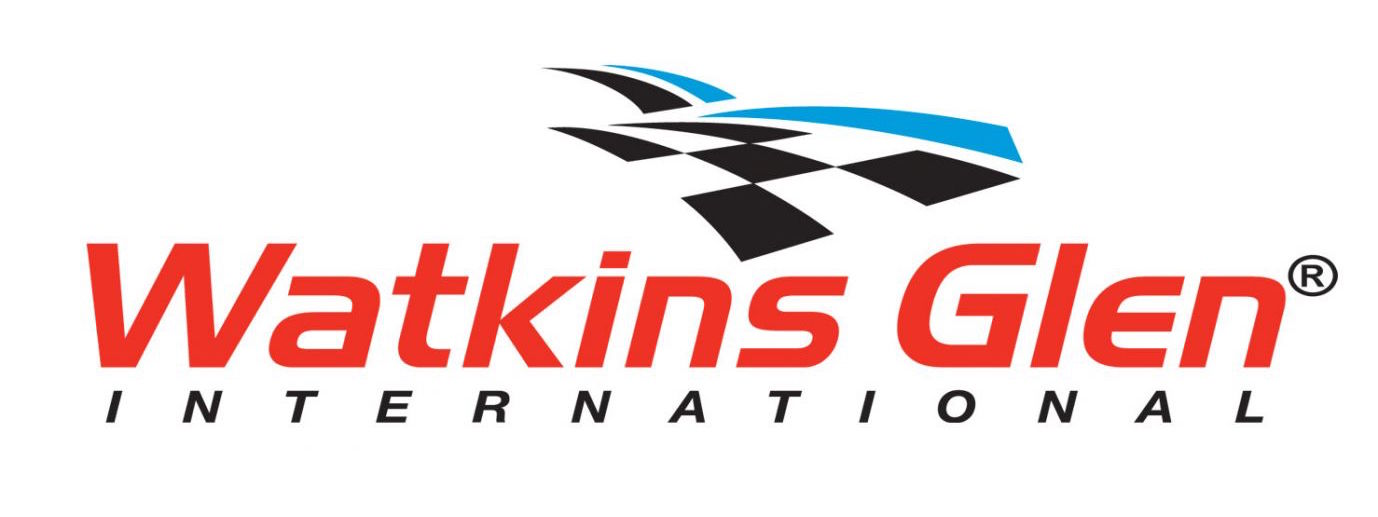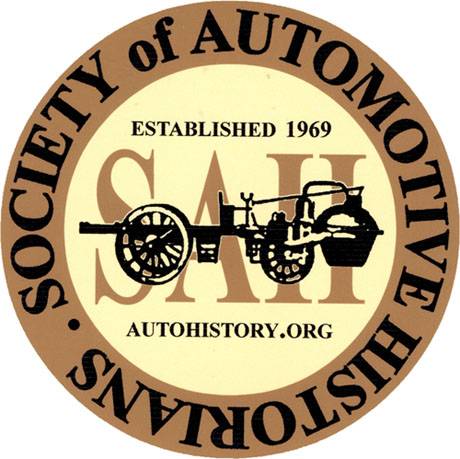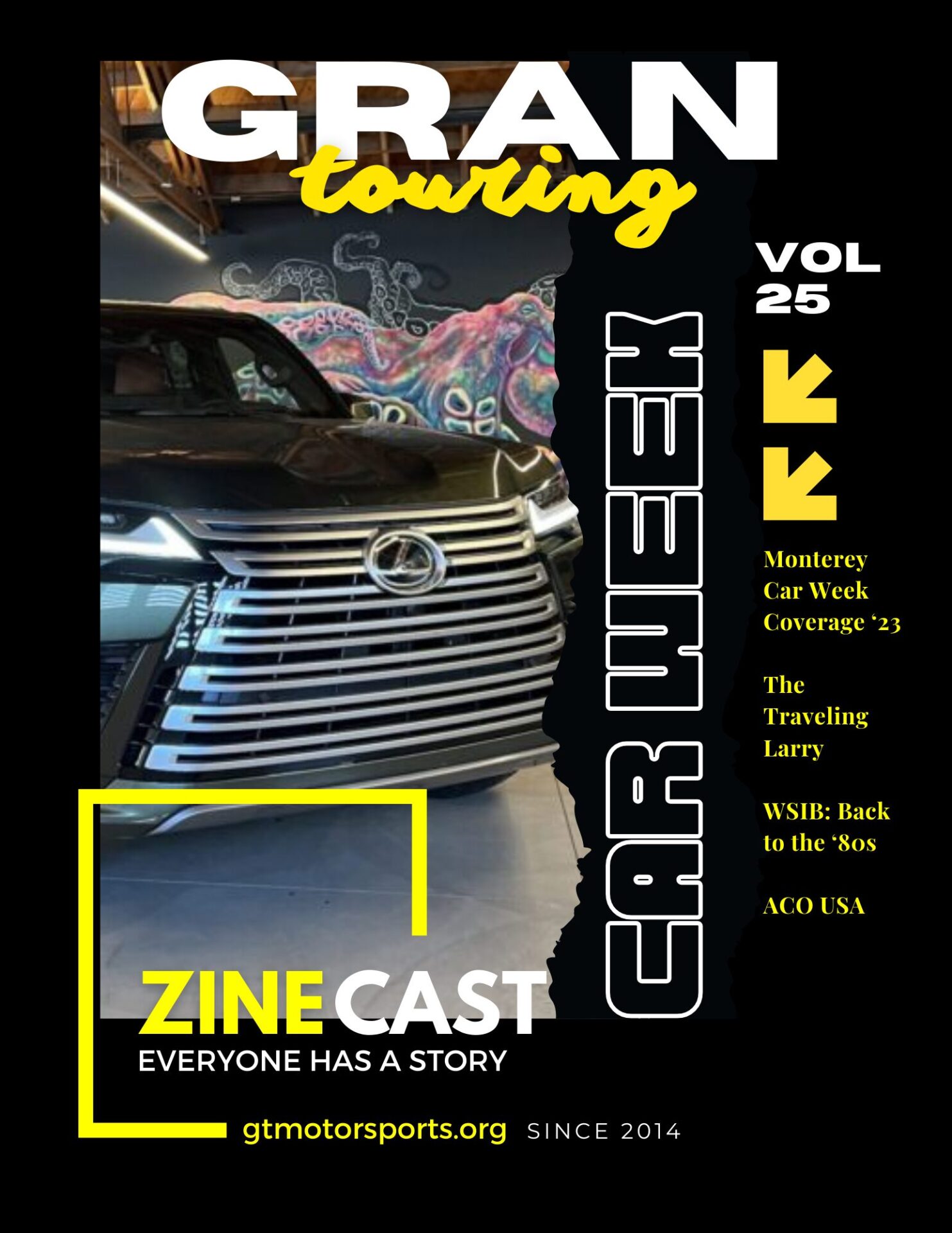The Green Grand Prix is an educational and competitive event in Watkins Glen, NY including the only Official SCCA road rally that promotes entry of all road- legal vehicle types and fuels in North America. The Road Rally is sponsored by THE DORIS BOVEE MEMORIAL FOUNDATION and TOYOTA. Doris Bovee was an environmental enthusiast and the road rally is a tribute to her.
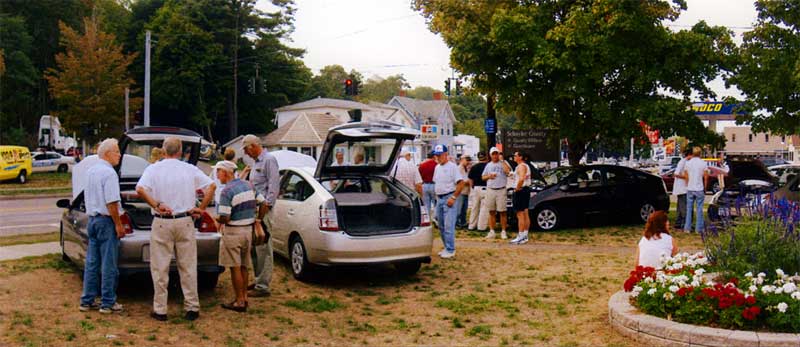
Their mission for the last 17 years has been to increase the awareness of energy efficient, environmentally friendly vehicles. The Green Grand Prix’s goal is to work towards making the North East a center for advanced vehicle technologies. This STEM program has brought in over 150 high school and university students from all over, and the focus is on technology, innovation and new collaboration in the field of Alternative Fuel Vehicles.
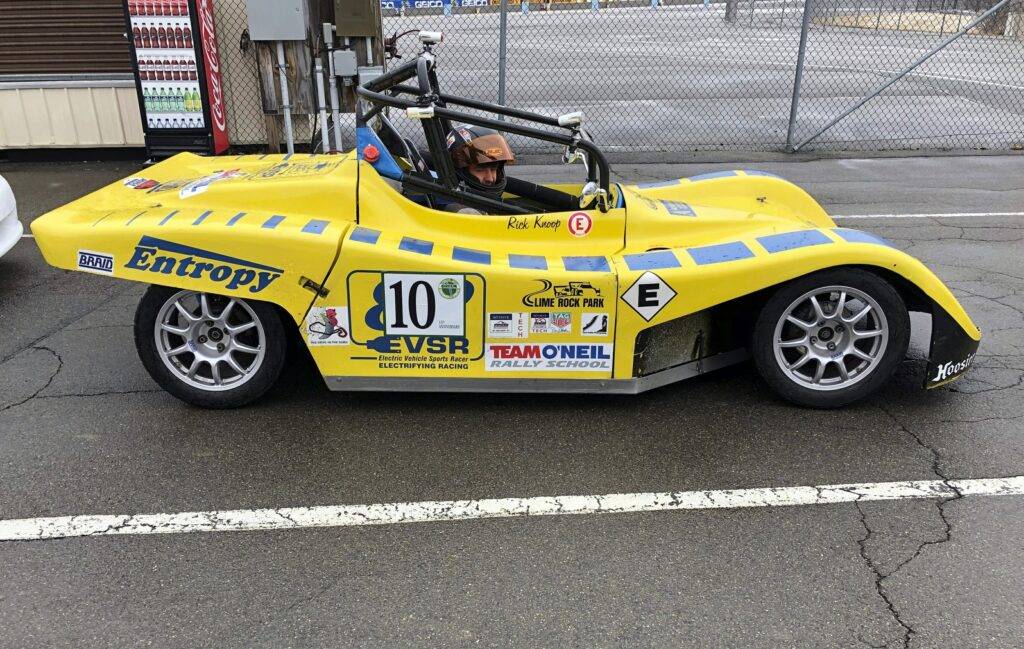
Robert Gillespie and Jason Kellogg join us from the Green Grand Prix to share the evolution and future of this program, and how you can get involved.
Tune in everywhere you stream, download or listen!
 |  |  |
- Notes
- Transcript
- Highlights
- Learn More
Notes
- Tell us about this history of the Green Grand Prix. It’s been around for 17 years, but many of us are hearing about this for the first time. Where did the idea come from and how did the program get off the ground?
- Who is Doris Bovee, why is her story important to the Green Grand Prix?
- How has it evolved over the years?
- What is the event like? Is it a competition? Is it a race?
- How do students enter the event? What are some of the rules/regulations?
- Are there different roles? Manager, Driver, Crew Chief, Mechanic – does everyone have a specific task, or all share in the work?
- Is this designed as an introduction to Formula SAE?
- What are some of the limits/restrictions that have been put on the vehicles? Are there different classes? Are all cars electric? Or Alt fuels (synthetic gas or hydrogen)
- The Green Grand Prix is held at Watkins Glen International each year; what happens on the “day of” the grand prix? (explain the types of activities on the schedule).
and much, much more!
Transcript
Crew Chief Brad: [00:00:00] Grand Touring Motorsports started as a social group of car enthusiasts, but we’ve expanded into all sorts of motorsports disciplines, and we want to share our stories with you. Years of racing, wrenching, and motorsports experience brings together a top notch collection of knowledge and information through our podcast, Brake Fix.
Crew Chief Eric: Their mission for the last 17 years has been to increase awareness of energy efficient and environmentally friendly vehicles. The Green Grand Prix’s goal is to work towards making the Northeast a center for advanced vehicle technologies. This STEM program has brought in over 150 high school and university students from all over, and the focus is on technology, innovation, and new collaboration in the field of alternative vehicles.
Fueled vehicles with us tonight are Robert Gillespie and Jason Kellogg from the Green Grand Prix to share the evolution and future of this program and how you can get [00:01:00] involved. So welcome to break fix gentlemen.
Bob Gillespie: Thank you. Thank you. Good to be here.
Crew Chief Eric: So like every good break fix story, there’s always an origin.
So tell us about the history of the. Green Grand Prix, as we said in the intro, it’s been around for 17 years, but many of us are hearing about this for the first time. So where did the idea come from and how did the program get off the ground?
Bob Gillespie: That’s a great question because there’s another little factoid.
It’s very much unknown and that is that the world land speed record was battled for back in 1899 by two electric cars. It ended up with the winner being Camille Jeannette, say, and he had. A car that was shaped like a torpedo, totally electric, two electric motors went 65 miles an hour, just astounding. So the green Grand Prix started before other forms of Grand Prix racing.
I suppose, as far as I’m concerned, the idea came from a national SCCA sports car club of America champion, [00:02:00] his name is Oscar Kowalewski, very well known. I do artwork of the Watkins Glen races. I had shown my artwork regularly at the track. Everybody meets Oscar. He was very congenial. He would come up and he knew that I was a retired teacher.
And he says, Gillespie, you’re a teacher. What are you doing for the kids? Well, I was just selling my artwork trying to make a few bucks, and he kept saying this every year. Then there was an event in Saratoga called the Tour de Seoul. That was a mini version of a road rally done around a park that had electric vehicles and alternate fueled vehicles.
It went belly up back in 2004. Well, I was a volunteer on the last Tour de Seoul. When that was canceled the following year, I thought, well, you know, maybe I could do something like that at Watkins Glen. Maybe I could bring together some organizations. I knew a lot of people, people in the Sports Car Club of America, people at the International Motor Racing [00:03:00] Research Center, later the Seneca Lake Pure Waters Association, which was a charity, knocked heads together and we decided that we could put together an event.
Which actually it started out being a static car display on the Watkins Glen courthouse lawn. We had five vehicles on display and we were talking about doing laps around the old Watkins Glen circuit. Well, that never happened, but we began by having a road rally around the perimeter of Seneca lake, which was about 80 miles.
And we ran that for a few years. And then I think it was 2014, we were invited by the racetrack to come up and hold it there. So everybody was delighted and thanked them very much. They charged us nothing to use the track. By the way, they still do. We’re very appreciative of them. Toyota is our major sponsor.
They’ve been absolutely wonderful. So we moved up to Watkins Lennon International about 2014. It has kept [00:04:00] evolving since then.
Crew Chief Eric: So Bob, one of the other things you mentioned in all this is your artwork. So little known fact, you’re actually responsible for a lot of the murals in downtown Watkins Glen?
Bob Gillespie: Yes, all except one.
There’s a NASCAR mural that was just done last year or the year before. I didn’t do that one. That’s. Kind of like a beer commercial or something, but that’s not mine. I did the one that’s got the Cunningham and the Ferrari. And then I did the one of Bill Milliken’s Bugatti, which is on the building just south of it.
Crew Chief Eric: So Jason, how about you tell us how you got involved in this origin story of the Green Grand Prix. How do you play into this?
Jason Kellogg: I actually work for Alfred State College. 2016. And about that same time, we also started an autocross event on the track. So the morning is a rally, the afternoon is an autocross event.
So we’re doing what we can to get students involved, experience alternate fuel, electric, hybrid vehicles, learn the technology they’re going to be working on in the near future.
Crew Chief Eric: And there’s another component to the history of the Green Grand [00:05:00] Prix, and that’s in the story behind Doris Bovet. So why is she so important to this event?
Bob Gillespie: Doris Bovet. Was a Glen region, SCCA member. She was a faithful rallyist and she was a teacher. She worked in a public school. She was a lifetime educator and she was also an environmentalist. I found out about that foundation, found out about Doris Bovet. Through a great friend of mine, his name is Dave Davies and he’s in the Glenn region.
So they have been sponsoring us forever. We continue the things that she cared about because the event has evolved to serve auto tech students. It’s environmentally minded and we have a rally. All the things that represented Doris.
Crew Chief Eric: Do you both personally own or drive an alternative fuel vehicle?
Bob Gillespie: I got a 2018 Prius and I’ve had three Prii and I’ve put 240, 000 miles on my first two Priuses.
I got about 85, [00:06:00] 000 miles on this one now, but I plan to drive it for the next few years.
Jason Kellogg: I do not own one yet, but like I said, I do teach it. I’m also a GM tech for the last 20 years. I have been trained in the dealership. I’ve worked on them in the dealership. I’ve serviced quite a few of them. I teach them and work with this event.
So I appreciate the technology.
Crew Chief Eric: So what’s the overall. Expectation, expect the students, have they been working up to this throughout the years? Is there some sort of curriculum that backs this up? Obviously this is grounded as a STEM program, so are there hands-on exercises? Are there things they’re working on?
What’s the takeaway here for people that maybe wanna try this for the first time?
Jason Kellogg: My class is senior automotive students getting ready to graduate in May. And with newer technologies, I mean, they’re going to be working on these cars in the field as soon as they graduate. I actually have a four week course that I teach where students learn the safety aspects of the vehicle, all of the high voltage issues, proper safety gear, all the way to removing the high voltage batteries, putting them back in.
That’s taking the drivelines apart. So in class, in the fall semester, they’ve learned how to [00:07:00] work on the cars, and this event gives them an opportunity to drive them on the road. Say two thirds of my students, three quarters of them, have never driven a hybrid. Probably 90 percent have not driven an electric car.
So this gives them a chance to experience a little bit more than normal, what they’re going to be working on.
Bob Gillespie: I’ve had faculty from other schools that have competed saying that they use this really as kind of a hot dog to hang in front of the wagon in their course. They tell them, you know, in the spring, you’re going to be able to go to the Green Grand Prix.
And so you need to learn this and learn that. And our
Jason Kellogg: students attend the event, compete with it. And our students assist running the event. Our students act as tech inspectors, transponder workers, autocross workers, et cetera. So we compete in it and we help run it.
Bob Gillespie: And, uh, they all look forward to driving.
I mean, everybody wants to drive on the Waukensland track. And somebody who gets to drive for an hour and a half or two hours, how can it get any better than that?
Jason Kellogg: Within the next month, my students will be going through all the cars we have. The [00:08:00] building that I’m working in, we have three classes, 15 students a class.
Each class is going to have two cars a run, and they’re going to go through a car prep before we get there. So be checking the vehicle condition, making sure it’s safe, performing alignments, maximizing angles, stuff like that. That and they’re learning that he can’t just show up the track and compete. We have to make sure we’re going to pass tech inspection for the morning event tech inspection for autocross.
We’ve got to make sure we’re legit. Nelson’s going to fail.
Crew Chief Eric: As we talk about the evolution of the program or the 17 years, you keep mentioning the rally. Jason briefly talked about the autocross, but it’s held at Watkins Glen. So how does this all work? Is there a rally at the track? Are they doing laps of the track?
Obviously there’s autocross lots at the track. So how does. This event play out over the course of the weekend.
Bob Gillespie: It was just a road rally and we figured out a way to do it on the racetrack itself. It’s interesting because it’s a road rally time speed distance event that is run on a world famous Grand Prix circuit.
Usually takes place on opening
Jason Kellogg: weekend of walk
Bob Gillespie: ins
Jason Kellogg: Glenn on a Friday before opening [00:09:00] weekend, the morning event, basically 10 to noon is a on track event. It’s time distance. It’s about 80 miles. Give or take we’re on a track for two hours and there’s different classes for different vehicles, four cylinder hybrid, six cylinder.
You know, different alternate fuels, different versions of Toyota Priuses. Students are timed on our laps. So the drivers with the most number of perfect laps will win certain categories and best fuel mileage wins other categories. So it’s not truly bumper to bumper racing. It’s time distance.
Bob Gillespie: And it’s got that fuel economy aspect.
So we judge these vehicles on two sets of rules. One is. How consistent their lap times were, we hang transponders on the cars. And so we know their times down to a thousandths of a second. And then also we can monitor their fuel economy. Most of the cars that are in the event have onboard computers that tell them miles per gallon.
But if a car does not have an onboard computer, then we require them [00:10:00] to top off their tank before and after the event, we can measure how many miles they traveled and then. From that, we get to their fuel economy.
Crew Chief Eric: So are you using Watkins Glen full course, the NASCAR variant? How is the rally laid out if you’re using the track itself?
Bob Gillespie: For years, we used the NASCAR short track. Last year we used the long course. Of course, that’s got all the elevation changes and it introduced a new challenge. This year, we’re going to use the bus stop also. So we’ll be using the whole thing.
Crew Chief Eric: So is the idea then. To maximize the fuel efficiency by, let’s say hypermiling or something like that.
I’m trying to figure out what the perfect lap is. You guys mentioned that a couple of times. So how do you qualify that?
Jason Kellogg: For example, the average speed is limited to about 45 miles an hour. And the last few years we’ve been announcing at the event, what the speed’s actually going to be to throw another challenge into it.
Well, the elevation changes, you’re allowed about a 10 mile an hour range [00:11:00] difference. You can go uphill a little bit slower, downhill a little bit faster to gain speed to work your fuel mileage to your advantage. But we have to keep the lap times perfect. The morning event, we have a driver and a co driver in the car.
The co driver can use a stopwatch fixed points around the track to help calculate their time. Try to ensure the perfect lap.
Crew Chief Eric: All of this has to be done on a single tank of fuel? Like, there’s no pit stops here, right? But they’re still running for two hours straight.
Bob Gillespie: Well, they do have one pit stop, but that doesn’t involve refueling.
It’s basically a potty break. But that pit stop has to measure four minutes exactly, from the time they enter the pits until they’re at the pit exit. Even the pit stop is a challenge. It’s got to be done just right.
Crew Chief Eric: Let’s dig a little deeper now. So you talked about the cars themselves. Now, are these cars that are provided by, let’s say, Toyota, are these cars that the students have built sort of like a Formula SEAE type of program?
Jason Kellogg: So most of these cars are stock cars supplied [00:12:00] by whoever’s going to drive them. You know, if they can borrow ’em from their parents, if the school has ’em, whatever. For example, I’m representing Alfred State. We bring six cars that are street legal. We bring three Chevy Volts, 2012 to 2013 Toyota Prius, about 2010, a Ford Fusion, about 2009, and a Honda Insight.
This year we’re trying to borrow a 2022 Rivian from a local person to run. So, you know, whatever. Every get your hands on in the past. We’ve had modified vehicles, different aero packages, other items, but usually lately they’ve been mostly stock EVs, hybrids, alternate fuels.
Crew Chief Eric: What do you consider alternate fuel?
Is it a hydrogen car? Is diesel considered an alternate? What’s in that list?
Bob Gillespie: When we used to run the cars around the lake, I think in the final year we had it. There were eight different fuels that our entries had. I think that was the record, possibly nine. So we had a Stanley steamer. He didn’t go the whole distance around the lake.
He went maybe 20 miles and we had a [00:13:00] solar car, same story there. They didn’t make it very far, but we said, sure, come on. And it’ll be a photo op, you know, and then you can explain your project car to all the students. Because really one of our goals was and is. To expose the students to as, as many different technologies as possible and get them really interested in all kinds of things that might be considered offbeat right now, but who knows what the future holds, we did have a hydrogen powered Toyota Prius from the Vermont department of conservation that worked on bottled EVs.
Vegetable oil powered diesels. We had a wood chip car, but we had to blackball him early on because he was stealing the show. Nobody else wanted to know anything else. He was a magnum. He provided the eye candy. This wood powered car was very interesting and very entertaining, but totally impractical.
Crew Chief Eric: Then there has to be some sort of [00:14:00] limitation to this.
Let’s call it competition. It’s not a race. It’s sort of a rally. Let’s call it a competition. Let’s say I’ve got a diesel, even if it’s lowly VW diesel, something like that from 20 years ago. If I set the cruise control, the diesel is super efficient. It’s like barely running at 45 miles an hour. And even on the hills of Watkins Glen with an automatic, the diesel is just going to build boost with the turbo and it’s still pretty efficient.
So how do you do let’s what we would call in the racing world. Some sort of balance of performance. Are there things that the drivers aren’t allowed to do? What are some of the exceptions to the rules here?
Jason Kellogg: One thing is like for diesels, we have different classes. So if we did have a diesel four cylinder, that’d be in its own class.
It’s not directly competing with a gas. Or an electric for fuel mileage. And there are rules. The events is designed lately for students, educate them about the vehicles. And most of the students, this is their first time on a track. So there’s no drafting, stay in the right hand lane. If you’re passing, pass on the left hand side.
Don’t just take [00:15:00] all the apexes, you know, respect traffic.
Crew Chief Eric: So how are passes handled? Are they point buys? I know you talked about get in the right lane, pass on the left, but are you using like typical, almost HPDE style passing rules or how does that work?
Jason Kellogg: Basically since we. I started running the boot last year.
We have a standing rule, the boot’s narrow with all the hills, there’s no passing in the boot. Turn one, we want single file also, but pretty much everything is fair for passing.
Crew Chief Eric: To include the uphill S’s from two to four?
Jason Kellogg: Uh, they usually don’t
Bob Gillespie: there.
Crew Chief Eric: I wouldn’t race car, but you know, hey.
Bob Gillespie: And you’ve got to watch your mirrors also because none of these cars have roll bars.
They’re just street legal cars. And this is a full SCCA time, speed, distance rally, and it’s insured and sanctioned by the SCCA.
Jason Kellogg: Those are concerns we have to deal with. There is a tech inspection. The car is basically have to have safe tires, proper air pressures, lights, windshield wipers. For a stock class, there’s a maximum limit on tire pressure, obviously higher pressure, less rolling resistance.
[00:16:00] You can’t run four spare tires. It got to be street legal, you know? So we do have some rules, but we do have people. And, uh, modified class run different aero packages, you know, they’ll add parts of the car, tails, whatever, trying to, uh, increase aerodynamics and some have done that with success. And we do a little bit pickup trucks.
So, you know, high center of gravity, no motorcycles, stuff like that. So there are some rules for safety SUVs are allowed, not normally, but this year we’re going to try to run one of the Rivian SUVs just came out that has air suspension. And with a low center of gravity of the battery and a floor that can drop right to the ground that has 15 inches of suspension travel.
So as long as he’s all the way down,
Bob Gillespie: We have had SUVs before, mostly hybrids. For example, the, uh, Toyota RAV4 Prime got incredible fuel economy last year. I think I got something like 70 miles to the gallon off an SUV. That’s unheard of. Of course, they were driving 45 miles an hour, but still they’re going uphill, down, and they had to manage everything just right [00:17:00] in order to get that.
And it becomes a game because you get instant feedback from these hybrids with the monitors that they have. It helps you drive it for maximum economy. So it’s a challenge.
Jason Kellogg: So, you know, when I’m there, I bring a… College 15 passenger van. And I give students that are watching rides around the track during the event, staying out of people’s way.
So I think I get the worst fuel mileage.
Crew Chief Eric: How many cars are entered in an event? When we run a track event at the Glen, there’s usually a equation of how many cars per mile.
Bob Gillespie: Usually it’s between 40 and 45. 50 cars is really pushing it. We don’t want a crowded racetrack.
Crew Chief Eric: That’s not bad at the Glen being three and a half miles.
You’re doing better than, you know, 20 cars per mile. So that’s pretty good. You’ll still have trains either way because you don’t have closing rates and things like that. So you do, let’s say 80 miles of Watkins Glen. There’s gotta be some sort of break in there, lunch, maybe some sort of tech talk, and then the autocross is in the afternoon.
Is that how the rest of the day plays out?
Bob Gillespie: Yes. Lunch is [00:18:00] at noon. And we have a seminar, which is going to be live streamed this year. Then in the afternoon, we’re going to have some mock pit stops by the Alfred Motorsports Department on their EBSRs. It’s a sport racing car that’s all electric. And then also Cornell University is bringing their SAE Formula car, which is all electric also.
And they’re going to do two different talks on their car. One in the morning, one in the afternoon, but the autocross I think starts. About 1 45 and runs until maybe 4 o’clock, 4 15, something like that.
Crew Chief Eric: And that’s done with the same cars that were used for the on track exercises, or are there a different dedicated set of cars for the autocross?
Jason Kellogg: Same cars, but we do have different rules. So the morning event. is alternate fuel. You can have fuel efficient gasoline vehicles, diesel, electric or hybrid. The afternoon event, we narrow the field down. It’s strictly only for electric cars or hybrid cars.
Crew Chief Eric: And then you just score that on best run or whatever.
Is that how it works?
Jason Kellogg: Just [00:19:00] regular SCCA. We got a time and the students have the opportunity. They can run 15 runs throughout the day. They really have a lot of fun.
Crew Chief Eric: Are they jumping between cars, trying different ones?
Jason Kellogg: What I do with my students, um, I’m going to be bringing about 45 students from Alfred state.
I have six dedicated drivers. I let them try five or six times to do the best I can. Then we’ll start giving other students rides in the front seat as a passenger. Then they’ll let the passenger try it. So a lot of students get an opportunity to try it and sometimes they’ll swap cars. Just to get the experience,
Crew Chief Eric: I want to know the inside baseball here.
I want to know those super secrets. What are some of the things that people can do to maximize their competitive advantage when they’re out there on the tracks, or there’s some things you can share some tips, or maybe even the pre brief that you guys give to folks that might be helpful.
Bob Gillespie: As far as driving tips go for hybrids, it’s really the same for any car.
I remember when I was a kid, I read a book by Sterling Moss and he said, a lot of people can drive fast, but very few drive fast smoothly. It’s all about smooth [00:20:00] driving and being easy on the car, using all the road when possible, just evening everything out, back off a little bit on the hills, but you can make up for it on the downhill sections.
Hypermiling stuff, but not extreme because you don’t want to drive in a dangerous way, but you just want to be consistent and even on the throttle. It’s just good advice anyway.
Jason Kellogg: Actually, the event is kind of unique because the morning event is designed for maximum fuel mileage and efficient driving. But if you know what autocross is, fastest car wins.
So that’s the opposite use for a hybrid. Fuel mileage doesn’t matter. Tire wear doesn’t matter. Drive it. You know, and we actually have our students practice a little bit ahead of time. We do a mock event
Crew Chief Eric: and then there’s an awards dinner in the evening. So it’s kind of an all day affair, right?
Bob Gillespie: Yeah, we, we try to do it all in one day
Crew Chief Eric: as we kind of, let’s say, wrap up the thought on this, how can people get involved?
How can they help? What kind of help do you need? Do you need volunteers even looking to next year’s program? You know, there’s a lot of logistics. Even after 17 years of [00:21:00] repetitive success, there’s a lot that goes into this. So how can people get involved and what can they do?
Bob Gillespie: I would say that if listeners know someone that’s an educator, either in a high school or at a college, tell them about it, direct them to the website, have them watch the live stream.
It’s something that we want as many schools as possible to compete. It would be great if we had no room for private owners and it was all just. Entries from schools right now, as it is, I think we’ve got maybe two thirds of our entries come from schools and one third private owners of unusual vehicles.
Crew Chief Eric: So gentlemen, as we wrap out here, any final shout outs, promotions, or anything else you’d like to share that we didn’t cover this far.
Bob Gillespie: There’s one big thing I’d like to mention, and that is that this is an event that could be replicated throughout the country. But what would be needed is a Sports Car Club of America chapter that’s near a racetrack that has a good relationship with them, a university or [00:22:00] college nearby that has an auto tech program that’s interested.
And then you have to have a charity because this is an SCCA charity event. It’s a charity road rally and SCCA allows. Every region to have one charity road rally per year. This is it for us. And it’s the same throughout the country. The Doris Bove Memorial Foundation sponsors our event along with the Upstate Toyota Dealers Association.
Is our primary sponsor and has been for years and years, and we are very grateful for their constant support.
Jason Kellogg: We’re also very thankful for Watkins Glen, giving us a use of the truck.
Bob Gillespie: Just watch for the future because I think it’s going to continue to grow. I hope it will be replicated and it’s an awful lot of fun.
Crew Chief Eric: The Green Grand Prix is an annual event that showcases and promotes environmentally friendly and fuel efficient vehicles. The event typically includes demonstrations and competitions that test the fuel [00:23:00] efficiency and emissions of vehicles, as well as seminars and exhibits on green transportation and related technologies.
The Green Grand Prix aims to raise awareness about the importance of sustainable transportation and to encourage the development and adoption of clean, efficient vehicles. To learn more, be sure to log on to www. greengrandprix. com or follow them on social at Green Grand Prix Corporation. on Facebook, Jason and Bob, I can’t thank you enough for coming on break fix and sharing the history of the Green Grand Prix, getting people excited about this.
I’m looking forward to being at this event in person and being able to relay back some of the stories and the antics and things that are going on with this. So very excited to be a part of this this year and looking forward to seeing what happens next.
Bob Gillespie: Well, thank you very much. It’s great to have you promoting our event.
And this is something that people need to know more about. It needs to be discovered.
Crew Chief Eric: All right, gentlemen. Thank you so much.
Bob Gillespie: Thank you, Eric. Thanks.[00:24:00]
Crew Chief Brad: If you like what you’ve heard and want to learn more about GTM, be sure to check us out on www. gtmotorsports. org. You can also find us on Instagram at GrandTouringMotorsports. Also, if you want to get involved or have suggestions for future shows, you can call or text us at 202 630 1770 or send us an email at crewchief at gtmotorsports.
org. We’d love to hear from you.
Crew Chief Eric: Hey everybody, Crew Chief Eric here. We really hope you enjoyed this episode of break fix, and we wanted to remind you that GTM remains a no annual fees organization, and our goal is to continue to bring you quality episodes like this one at no charge as a loyal listener, please consider subscribing to our Patrion for bonus and behind the scenes content, extra goodies, and GTM swag.
For as little as 2 and 50 cents a month, you can keep our developers, writers, editors, casters, and other volunteers fed on their strict diet of [00:25:00] fig Newtons, gummy bears, and monster. Consider signing up for Patreon today at www. patreon. com forward slash GT motorsports, and remember without fans, supporters, and members like you.
None of this would be possible.
Highlights
Skip ahead if you must… Here’s the highlights from this episode you might be most interested in and their corresponding time stamps.
- 00:00 Introduction to Grand Touring Motorsports
- 00:22 The Green Grand Prix: Mission and Goals
- 01:04 Origins and Evolution of the Green Grand Prix
- 04:01 Involvement and Contributions of Key Figures
- 04:48 Student Participation and Educational Impact
- 08:24 Event Structure and Competitions
- 11:48 Vehicle Types and Technical Details
- 20:50 Getting Involved and Future Prospects
- 22:48 Conclusion and Final Thoughts
- 24:02 Outro and Call to Action
Learn More

In the early years of the Green Grand Prix, it was an 80-mile Time-Distance-Rally around Lake Seneca. Today, the event is held each year at Watkins Glen International, and uses the entire 3.5 mile “full course” configuration with vehicles on track for 90 minutes to 2 hours, but the guiding principle remains the same “…achieve the Perfect Lap while Maximizing Fuel Efficiency.”
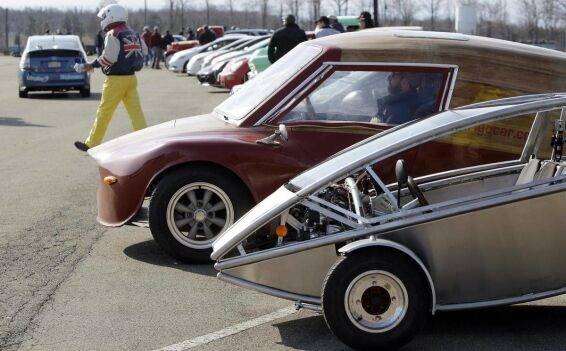
The Green Grand Prix is an annual event that showcases and promotes environmentally friendly and fuel-efficient vehicles. The event typically includes demonstrations and competitions that test the fuel efficiency and emissions of vehicles, as well as seminars and exhibits on green transportation and related technologies.
The Green Grand Prix aims to raise awareness about the importance of sustainable transportation and to encourage the development and adoption of clean, efficient vehicles. To learn more be sure to logon to www.greengrandprix.com or follow them on social @green-grand-prix-corporation on Facebook.
Livestreams from the 2023 GGP at Watkins Glen.







Want to help make an impact today?
Consider switching to non-petroleum based EVOSYN or ECORSA by EVOLVE lubricants in your race cars and passenger vehicles. Made from renewable plant-based oils, good for your vehicle (more MPG and horsepower) and better for the environment. Learn more on this Break/Fix episode.
Tune in everywhere you stream, download or listen!
 |  |  |


